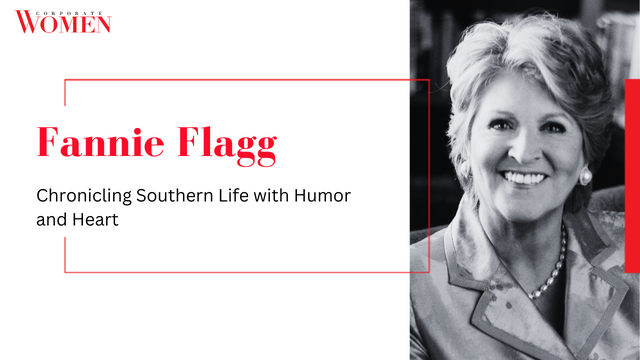Amplify Your Leadership Voice Worldwide
Join 7,000+ industry leaders sharing insights with millions of professionals globally
Join 7,000+ industry leaders sharing insights with millions of professionals globally

Fannie Flagg, born Patricia Neal on September 21, 1944, stands as a prominent American author, actress, and comedian celebrated for her enchanting and often comical stories deeply rooted in the American South. Possessing a distinctive voice and a unique talent for portraying small-town life, Flagg has evolved into a beloved figure in contemporary literature. This article delves into the life, career, and noteworthy achievements of Fannie Flagg, the storyteller whose narratives vividly bring the South to life in her books.
Hailing from Birmingham, Alabama, Fannie Flagg’s upbringing in the heart of the Southern culture served as a well of inspiration for her future literary endeavors. Her storytelling prowess emerged at a young age, entertaining her family with humorous anecdotes and tales from the South.
Flagg’s foray into show business marked the beginning of her career. Participating as a contestant on “The New Candid Camera” in the 1960s, she soon became a regular contributor, showcasing her charisma and storytelling talent. Her early experiences in entertainment laid the groundwork for her transition into the realm of literature.
Flagg’s journey as a writer was significantly influenced by her successful acting career. Her notable role in the acclaimed film “Fried Green Tomatoes” (1991), based on her novel of the same name, propelled her into the limelight, showcasing her talent as a storyteller.
Venturing into screenwriting, Flagg co-wrote the screenplay for the film adaptation of “Fried Green Tomatoes,” underscoring her versatility as a captivating storyteller across various mediums.
Fannie Flagg’s literary voyage took off with “Coming Attractions,” her debut novel published in 1981. However, it was the success of her second novel, “Fried Green Tomatoes at the Whistle Stop Cafe” (1987), that elevated her to literary stardom. This touching story of friendship and courage resonated deeply with readers, establishing Flagg as a bestselling author. The novel’s triumph led to a film adaptation that further solidified her reputation as a storyteller intimately connected to the cultural fabric of the South.
Flagg continued her literary journey with a series of novels, each echoing her signature blend of humour and heart. Works like “Daisy Fay and the Miracle Man” (1981), “Fannie Flagg’s Original Whistle Stop Cafe Cookbook” (1993), “Standing in the Rainbow” (2002), and “The Whole Town’s Talking” (2016) consistently enchanted readers with their depictions of Southern life.
Infusing her narratives with personal experiences, observations of the South, and a genuine affection for its people, Fannie Flagg’s novels resonated with a broad and appreciative readership. Her stories offer glimpses into the world of small Southern towns, where eccentric characters and unforgettable adventures abound.
Fannie Flagg’s literary canvas is deeply coloured by her Southern heritage. Themes of family, community, friendship, and self-discovery are recurrent in her works. Her novels are characterised by humour, warmth, and an adept touch in portraying life’s complexities. In “Fried Green Tomatoes at the Whistle Stop Cafe,” she skillfully addresses weighty issues such as racism, domestic abuse, and societal expectations within the framework of enduring female friendship.
Flagg’s storytelling captures the very essence of the South – its rich culinary traditions, unhurried pace of life, and nostalgia – all depicted with a warm touch. Her characters, often eccentric and lovable, linger in the reader’s memory.
Fannie Flagg’s body of work and storytelling finesse has etched her name as a revered figure in American literature. The seamless fusion of humour, heart, and Southern charm has garnered her a devoted fan base. Her novels, timeless classics, offer readers a comforting retreat into tales of camaraderie and resilience.
In summary, Fannie Flagg emerges as a masterful storyteller who intricately captures the spirit of the American South. Her novels and contributions to literature and film have solidified her as a cherished and enduring figure in the realm of storytelling.
Join industry leaders who have shared their insights with millions of professionals globally.
Copyright © 2025 The Corporate Women. All Rights Reserved.